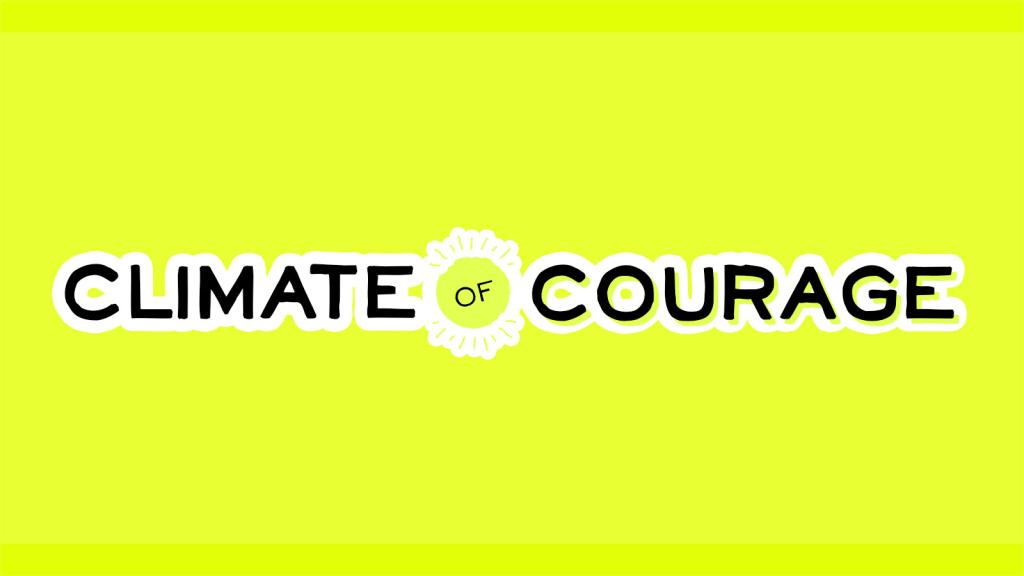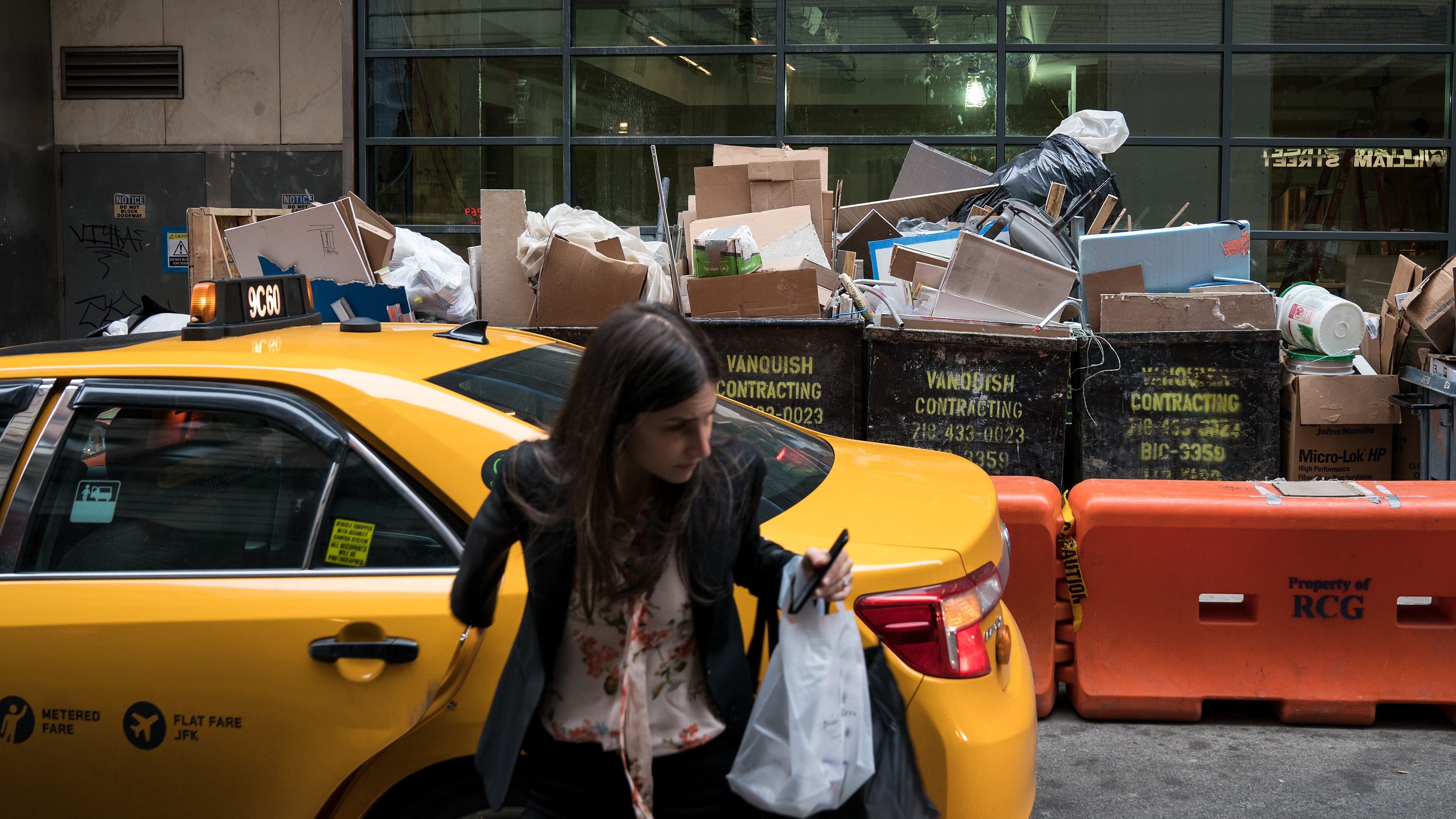Now that summer has faded away so too has the persistent stench of garbage piled on sidewalks and left out in the sun in major cities across the country. But trash itself isn’t going anywhere.
Managing waste in our cities is a daunting environmental challenge. We dump our trash bags outside, attracting rats and degrading the quality of public space. We collect this refuse with noisy diesel trucks that pollute the air and endanger communities; and we burn or bury the garbage in distant places, contaminating land, water, and the atmosphere.
But waste is not present in nature; it is a human design flaw.
Waste is the product of a linear system: Materials are extracted from the earth, processed and used, often very briefly, before being thrown out. Ecosystems, though, have circular systems: Materials are used and recycled in constant loops.
Take a northeastern temperate forest, what New York City was before it became, well, New York City. Most materials in this ecosystem are circulated seasonally. An oak tree leaf uses the energy from sunlight to create sugar from carbon dioxide and water. Trees use this sugar to grow and produce acorns. Acorns become food for squirrels. And discarded acorn casings become food for decomposers, like worms, which turn them into soil. And so the cycle goes.
Circular material loops like these are increasingly key to solving our trash problem and to achieving “zero waste,” the elimination of garbage disposal in landfills or incinerators. Right now, New York City, the most populous city in the United States, is dumping or burning 80 percent of its daily 24,000 tons. To combat this, the city has set a near-zero-waste goal for 2030: Send nothing to landfills and eliminate overall waste disposal by 90 percent.
Hitting that target in New York City and elsewhere starts with design. Thankfully, nature offers us an excellent blueprint.
While ecosystems mature into circular systems, they don’t start out that way. After a fire or volcano destroys a landscape, for example, the paucity of plants means that little sunlight is converted into food, and most of the rainwater runs off the bare ground. At this stage many resources leave the ecosystem unused, much like our own linear system. But as fireweed, one of the first arrivals in this new landscape, begins to create soil, larger shrubs and trees can use it to grow, thus providing habitat and food for herbivores. Those herbivores become prey for carnivores, and the system matures into a circular loop, with few resources leaving.
We can attribute this evolution to three key elements: cooperative relationships, niche specialization, and feedback loops. These processes are part and parcel of the “Zero Waste Design Guidelines” to help New York City make its transition from linear to circular. I led the development of these strategies to help design human systems inspired by nature’s solutions. The guidelines are already at work in the city; but, as we design our way to zero waste, we can further their reach.
Cooperative relationships
Swapping resources for services is a common cooperative strategy in the natural world—and one we can easily imitate. Insects, for example, drink nectar from a flower, and, in exchange, spread the flower’s pollen, allowing the plant to produce fertile seeds.
Likewise, New York City partners its sanitation department with the charity Housing Works in an effort called refashionNYC. The department provides textile collection bins to buildings, and, in exchange, the charity empties them and sells the clothing in its stores. (Profits then fund housing and health care services for the city’s HIV-positive population.) In other words, the service of textile waste collection is traded for the resource of clothing.
Niche specialization
Niche specialization simply means adapting better to a particular set of circumstances. Forest wildflowers, for example, emerge for a short time—when the ground has just thawed, but tree leaves have not sprouted—to soak up available sunlight and store it to survive the year in deep shade.
Similarly, BKRot, a composting group in Brooklyn’s Bushwick neighborhood, has found a niche to occupy within the city’s systems. The group finds vacant plots of land and employs local underemployed youth to collect food waste by bike from restaurants and households. The group then composts the waste, transforming its lots into community gardens. Finished compost is sold in local stores, to neighbors, and to other gardens.
Feedback loops
Feedback loops are critical to circular systems. Ants, for example, use two types of feedback loops to manage a colony’s food supplies: Worker ants returning with food stimulate other ants to leave the colony and search for more food—a “reinforcing feedback loop.” Upon their return, the ants give the food to donor ants within the colony, who feed it to the larvae. As soon as there are no waiting donor ants, the foragers stop gathering food—a “balancing feedback loop” that prevents overproduction.
Like ants, humans can design both types of feedback loops into our spaces. Etsy, a website that sells vintage and handmade items, encourages behavior change around waste collection in a reinforcing feedback loop. Its headquarters has no single-use bins, just central stations for trash and recycling. The Etsy office then prominently displays how much waste its office has diverted, a nudge that encourages its employees to recycle more.
We can also design financial incentives into our waste disposal system to discourage the overcollection of trash, creating a balancing feedback loop. In the same way that electricity or water is metered, we can track waste to the individual that produces it. Charging people for the waste they make will motivate them to create less and maintain a sort of trash equilibrium. Design that accommodates such financial incentives is a big part of the Zero Waste Design Guidelines.
Of course, transferring strategies from complex natural systems to human-designed ones isn’t always easy. For one, biological materials decompose easily, while human-created materials like plastics don’t decompose for centuries. And combining organic matter with plastics in a garbage bag or a landfill is bad news for the environment; it creates odors, releases methane gas, and of course, prevents plastics from being recycled. Thus human systems inevitably require extra steps, such as the separation and sorting of different waste items.
Ultimately, the benefits of transforming our cities to function like forests go far beyond zero waste. By circulating materials, energy, and water, our cities will be cleaner, cooler, and greener. Reusing, sharing, and fixing our things, rather than discarding them, will allow us a better quality of life with less stuff. And as a bonus, we’ll forge new partnerships that diversify and strengthen our cities’ communities. Lastly, like ecosystems, our cities will be resilient — and better able to weather an already uncertain future.
Clare Miflin is an architect and certified biomimicry professional. She is the founder of ThinkWoven and led the development of the Zero Waste Design Guidelines for the American Institute of Architects’ New York chapter.




